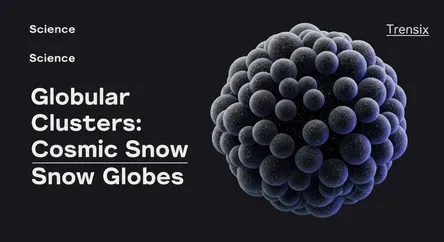Science
Globular Clusters: Cosmic Snow Globes

Explore globular clusters, ancient, dense balls of stars orbiting galaxies. Learn why these cosmic fossils are vital for understanding the universe.
What is it?
A globular cluster is a vast, spherical collection of hundreds of thousands to millions of stars, all tightly bound together by gravity. These ancient stellar systems are among the oldest objects in the universe, orbiting the cores of galaxies like our own Milky Way. Unlike the younger, loosely-packed open clusters found within the galactic disk, globular clusters are densely populated with old, metal-poor stars. They are like cosmic fossils, offering a glimpse into the conditions of the early universe when the first stars and galaxies were forming.
Why is it trending?
Globular clusters are a hot topic in astrophysics thanks to advanced telescopes like the James Webb Space Telescope (JWST). These powerful instruments allow astronomers to peer into the dense cores of these clusters with unprecedented clarity, studying individual stars and searching for elusive intermediate-mass black holes. By accurately measuring the age of the stars within them, scientists can place a lower limit on the age of the universe itself. They are also key laboratories for testing theories of stellar evolution and galactic formation, keeping them at the forefront of cosmic research.
How does it affect people?
While a distant globular cluster has no direct impact on daily life, its study fundamentally shapes our understanding of the cosmos and our place within it. Research into these clusters drives technological innovation in telescope design and data analysis. For humanity, they provide a profound connection to the deep past, helping us piece together the history of our galaxy and the universe. They fuel curiosity and inspiration, reminding us of the immense scale, age, and beauty of the space that surrounds us, ultimately answering core questions about where we came from.